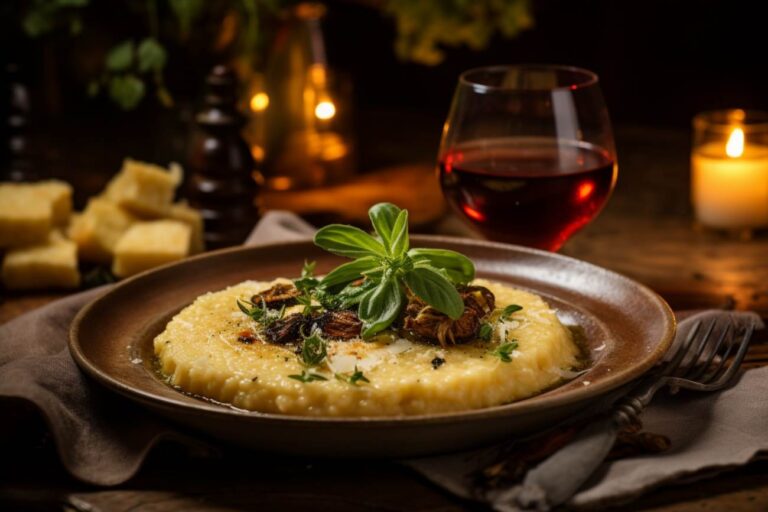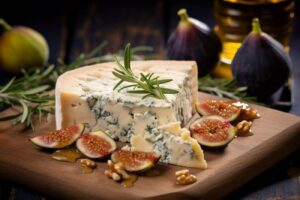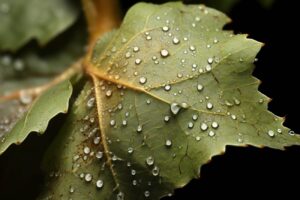Polenta Taragna is a delectable Italian dish that has captured the hearts and palates of food enthusiasts worldwide. This traditional Northern Italian specialty combines the simplicity of polenta with the rich flavors of cheese and butter. In this article, we will explore the origins of Polenta Taragna, its ingredients, preparation, and its place in Italian cuisine.
The origins of polenta taragna
Polenta has been a staple in Italian cuisine for centuries, with historical roots dating back to Roman times. Originally, polenta was made from various grains such as spelt, barley, and millet. However, it wasn’t until maize (corn) was introduced to Europe from the Americas in the 16th century that polenta as we know it today began to take shape.
Polenta Taragna, specifically, hails from the Lombardy region of Northern Italy. Lombardy is known for its lush landscapes and dairy production, making it the perfect setting for the creation of this cheesy and creamy dish. The „Taragna” in the name comes from the local dialect, referring to the wooden stirring stick used in the preparation of polenta.
Ingredients
Creating the perfect Polenta Taragna requires a handful of simple yet essential ingredients:
- Coarse Cornmeal: The foundation of any good polenta is high-quality coarse cornmeal, which gives the dish its unique texture.
- Butter: Unsalted butter adds a rich and creamy element to the polenta.
- Cheese: A blend of cheeses is used in Polenta Taragna, typically including Parmigiano-Reggiano, Bitto, or Casera.
- Garlic: Garlic cloves are used to infuse the dish with a subtle but enticing flavor.
- Salt: A pinch of salt enhances the overall taste of the polenta.
- Water: Pure, clean water is essential for cooking the cornmeal to perfection.
Preparation
Polenta Taragna is relatively straightforward to prepare, but it does require some patience and attention to detail:
- Begin by boiling water in a large pot. Once it reaches a rolling boil, add the coarse cornmeal, stirring continuously to prevent lumps.
- As the cornmeal absorbs the water and thickens, add butter, garlic, and a pinch of salt. Continue stirring to achieve a creamy consistency.
- Gradually incorporate the blend of cheeses into the polenta, ensuring they melt evenly and create a luscious, cheesy texture.
- Once the polenta reaches the desired thickness and has a smooth texture, it is ready to be served.
Polenta taragna in italian cuisine
Polenta Taragna holds a special place in Italian cuisine, particularly in Lombardy and the surrounding regions. It is often served as a hearty winter dish, providing comfort and warmth on cold days. This dish is a prime example of the Italian tradition of turning simple, local ingredients into a culinary masterpiece.
Polenta Taragna can be enjoyed on its own or as an accompaniment to various meats and stews. Its creamy, cheesy goodness pairs wonderfully with game meats like venison and wild boar. Additionally, it is often served with sautéed mushrooms, creating a delightful umami combination.
1. Can I use different types of cheese in Polenta Taragna?
Yes, you can experiment with different cheeses to suit your taste. While Parmigiano-Reggiano, Bitto, and Casera are traditional choices, you can get creative with your cheese selection.
2. Is Polenta Taragna gluten-free?
Yes, Polenta Taragna is naturally gluten-free since it is made from cornmeal. It is an excellent option for those with gluten sensitivities or celiac disease.
3. Can I make Polenta Taragna in advance and reheat it?
Yes, you can make Polenta Taragna ahead of time and reheat it when needed. Simply store it in an airtight container in the refrigerator and gently reheat it on the stovetop or in the microwave, adding a bit of water or milk to maintain its creamy consistency.
4. What is the history behind the wooden stirring stick (Taragna) used in Polenta Taragna?
The wooden stirring stick, known as „Taragna,” is a traditional tool used in Lombardy to stir polenta. Its name is derived from the local dialect, and it has been used for generations to ensure even mixing and prevent lumps in the polenta.
Zobacz także:






